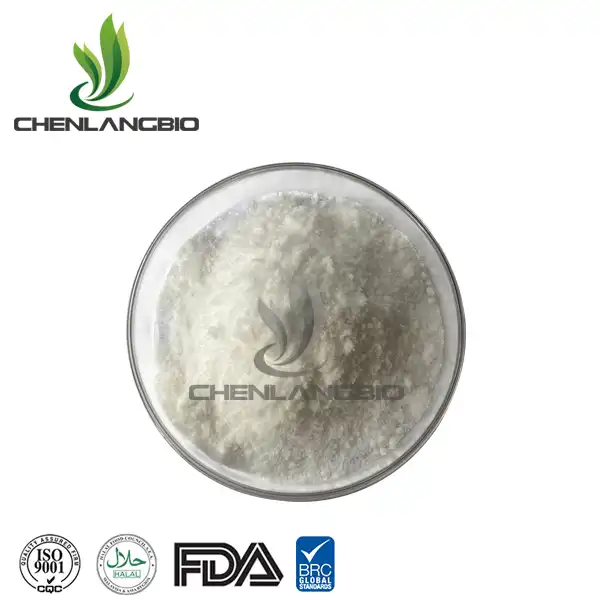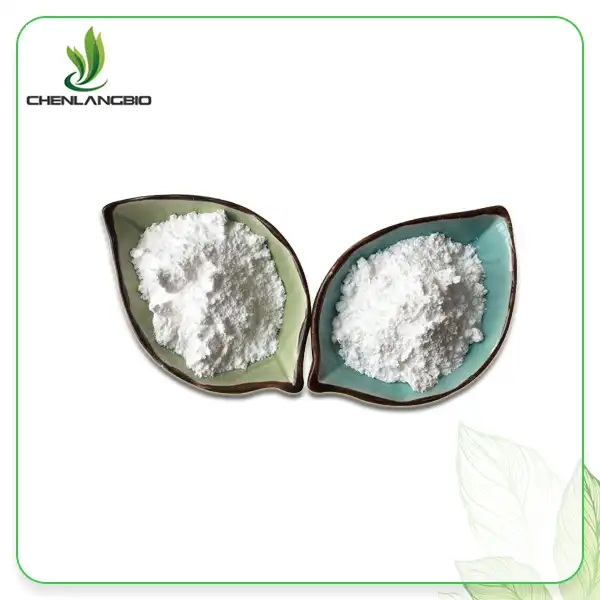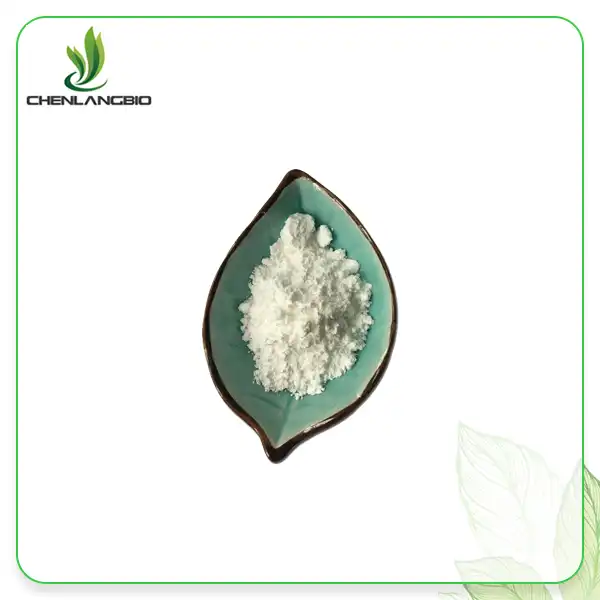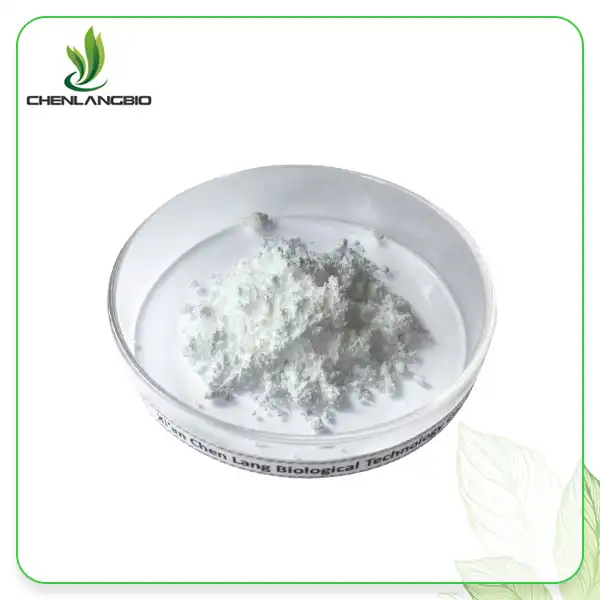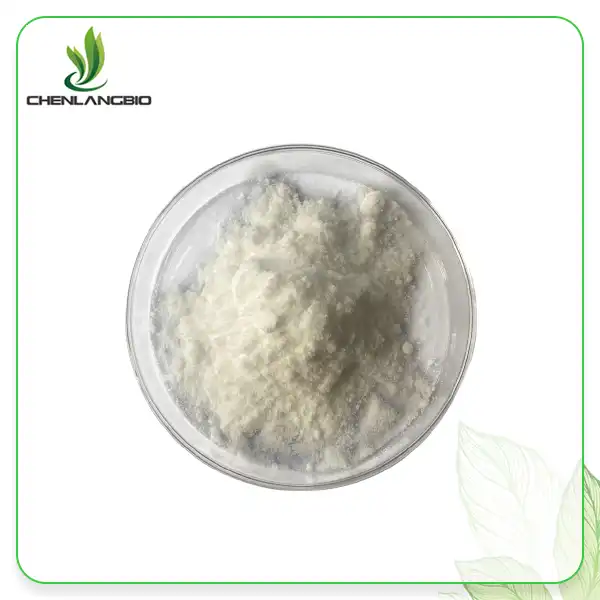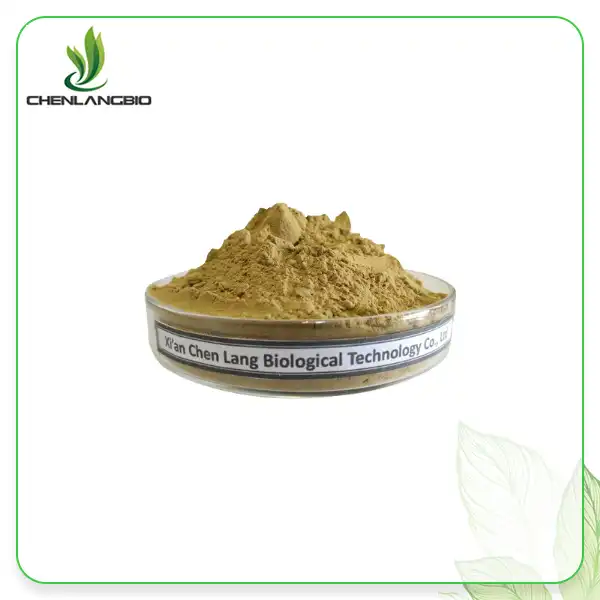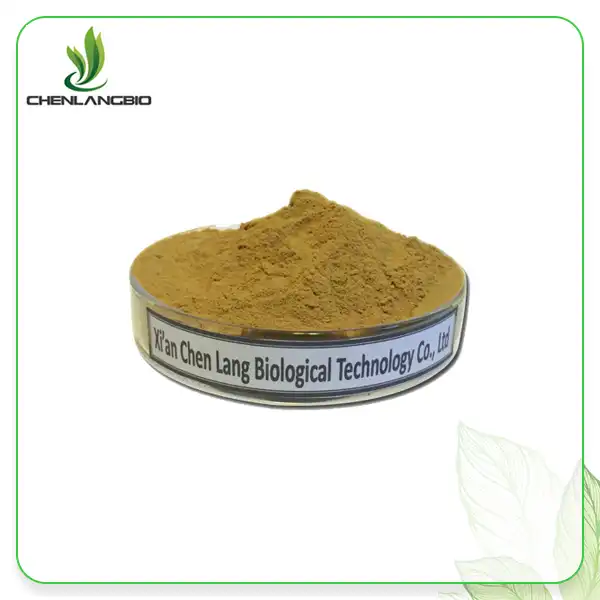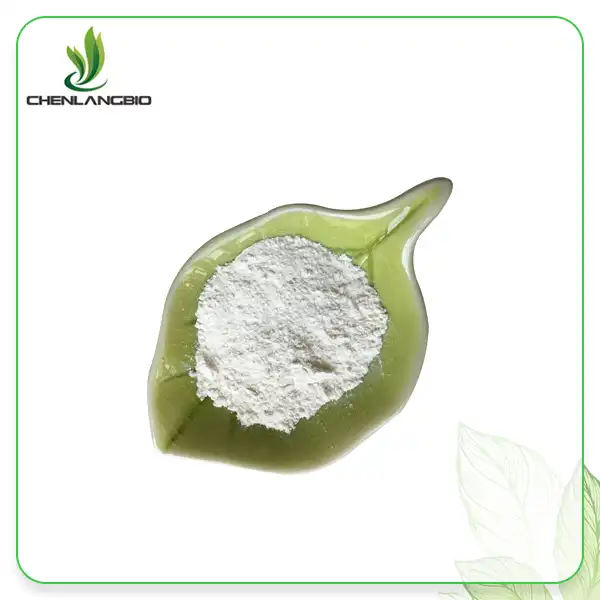Kaempferol, A Potential Neuroprotective Agent in Neurodegenerative Diseases: From Chemistry to Medicine
2025-10-20 10:12:52
As millions worldwide face the devastating reality of neurodegenerative diseases like Alzheimer's and Parkinson's, the search for effective treatments has never been more urgent. The progressive deterioration of nervous system function leaves families desperate for hope, while researchers scramble to find compounds that can halt or reverse cognitive decline. Enter kaempferol, a powerful flavonoid compound that's emerging as a beacon of hope in neuroprotection research. This naturally occurring polyphenol antioxidant, found abundantly in fruits and vegetables, is revolutionizing our understanding of how nature's compounds can combat the most challenging neurological conditions of our time.
Chemical Structure and Natural Sources of Kaempferol
Kaempferol represents one of nature's most sophisticated molecular defense mechanisms against neurodegeneration. This flavonoid compound, with its molecular formula C15H10O6 and molecular weight of 286.23, belongs to the flavonol subclass of flavonoids that have captured the attention of neuroscience researchers worldwide. The compound's unique chemical structure features multiple hydroxyl groups strategically positioned to maximize its antioxidant potential, making Kaempferol powder an exceptional candidate for neuroprotective applications. The natural abundance of Kaempferol in everyday foods makes it particularly appealing for both research and practical applications. This remarkable compound can be extracted from tea, broccoli, witch hazelnut, propolis, grapefruit, and numerous other green plants, providing multiple sourcing options for Kaempferol powder production. The compound is mainly derived from the rhizome of Kaempferol galanga L, though it's widely distributed across various fruits, vegetables, and beverages that form part of our daily diet.
-
Bioavailability and Solubility Characteristics
Understanding the physical properties of Kaempferol is crucial for its therapeutic application in neurodegenerative diseases. The compound exhibits limited water solubility but demonstrates excellent solubility in hot ethanol, ether, and DMSO, characteristics that influence its formulation as Kaempferol powder for medical applications. These solubility properties affect how the compound is absorbed and distributed throughout the nervous system, ultimately determining its effectiveness as a neuroprotective agent.
Neuroprotective Mechanisms of Kaempferol in Brain Health
The neuroprotective properties of Kaempferol operate through multiple sophisticated mechanisms that address the complex pathophysiology of neurodegenerative diseases. Kaempferol and its derivatives exert a neuroprotective role through various mechanisms, such as anti-inflammatory, anti-oxidative, anti-apoptotic effects, making it a multi-target therapeutic approach for conditions affecting the nervous system. Oxidative stress represents one of the primary contributors to neurodegeneration, and Kaempferol's potent antioxidant properties directly combat this destructive process. The compound neutralizes harmful reactive oxygen species that accumulate in brain tissue, protecting neurons from oxidative damage that leads to cell death. This antioxidant activity is particularly significant in age-related cognitive decline, where accumulated oxidative stress contributes to progressive neuronal dysfunction.
-
Anti-inflammatory Properties in Neural Protection
Neuroinflammation plays a crucial role in the progression of neurodegenerative diseases, creating a cascade of harmful processes that accelerate neural damage. Kaempferol demonstrates remarkable anti-inflammatory properties that help modulate the brain's immune response, reducing the production of pro-inflammatory cytokines that contribute to neuronal death. This anti-inflammatory action of Kaempferol powder helps create a more favorable environment for neural survival and potentially supports neural regeneration processes. The compound's ability to cross the blood-brain barrier effectively makes it particularly valuable for treating central nervous system conditions. Once in the brain tissue, Kaempferol can directly interact with inflammatory pathways, providing targeted protection where it's needed most. This direct neural access distinguishes Kaempferol from many other compounds that struggle to reach therapeutic concentrations in brain tissue.
Clinical Applications in Alzheimer's Disease Treatment
Alzheimer's disease represents the most common form of dementia, affecting millions globally and creating an urgent need for effective therapeutic interventions. This study suggests that Kmp may be a potential neuroprotective agent against cognitive deficit in AD, highlighting the promising therapeutic potential of Kaempferol in this devastating condition. The compound addresses multiple pathological mechanisms involved in Alzheimer's disease progression, from amyloid plaque formation to tau protein dysfunction. Research has demonstrated that Kaempferol can help protect against the cognitive decline characteristic of Alzheimer's disease through several mechanisms. The compound appears to reduce the formation of amyloid beta plaques, one of the hallmark pathological features of Alzheimer's disease. Additionally, Kaempferol powder has shown potential in protecting synaptic connections between neurons, which are crucial for maintaining cognitive function and memory formation.
-
Memory Enhancement and Cognitive Protection
The cognitive benefits of Kaempferol extend beyond basic neuroprotection to include active enhancement of memory and learning capabilities. Studies have shown that regular exposure to Kaempferol can improve spatial memory, working memory, and long-term memory retention in animal models of cognitive decline. These effects appear to result from the compound's ability to support neuroplasticity, the brain's capacity to form new neural connections and adapt to changing circumstances. Kaempferol's impact on neurotransmitter systems also contributes to its cognitive-enhancing effects. The compound helps maintain healthy levels of acetylcholine, dopamine, and other neurotransmitters essential for proper cognitive function. This neurotransmitter support is particularly important in Alzheimer's disease, where cholinergic system dysfunction contributes significantly to cognitive symptoms.
Parkinson's Disease and Motor Function Protection
Parkinson's disease affects motor control through the progressive loss of dopaminergic neurons in the substantia nigra region of the brain. This research examines the existing literature concerning the involvement of kaempferol in neurological diseases, including stroke, Parkinson's disease, Alzheimer's disease, neuroblastoma/glioblastoma, spinal cord injury, neuropathic pain, and epilepsy, demonstrating the broad therapeutic potential of this remarkable compound across multiple neurological conditions. The neuroprotective effects of Kaempferol in Parkinson's disease operate through several key mechanisms that address the underlying pathophysiology of this condition. The compound helps protect dopaminergic neurons from oxidative stress and inflammatory damage, two primary drivers of neuronal loss in Parkinson's disease. By preserving these crucial neurons, Kaempferol powder may help maintain motor function and slow disease progression.
-
Mitochondrial Protection and Energy Metabolism
Mitochondrial dysfunction represents a critical component of Parkinson's disease pathology, as these cellular powerhouses struggle to meet the high energy demands of neurons. Kaempferol demonstrates remarkable protective effects on mitochondrial function, helping maintain cellular energy production and preventing the cascade of events that leads to neuronal death. This mitochondrial protection is particularly important for dopaminergic neurons, which have exceptionally high energy requirements. The compound also appears to support the cellular cleanup mechanisms that remove damaged proteins and organelles from neurons. This enhanced cellular housekeeping helps prevent the accumulation of toxic protein aggregates that characterize Parkinson's disease, potentially slowing disease progression and preserving neuronal function.
Broader Therapeutic Applications in Neurodegenerative Conditions
Beyond Alzheimer's and Parkinson's diseases, Kaempferol shows promise in treating a wide range of neurodegenerative conditions. The compound's multi-target approach makes it valuable for conditions characterized by oxidative stress, inflammation, and neuronal dysfunction. Research has explored its potential in treating Huntington's disease, amyotrophic lateral sclerosis (ALS), and multiple sclerosis, with encouraging preliminary results. The versatility of Kaempferol powder as a therapeutic agent stems from its ability to address common pathological mechanisms shared across different neurodegenerative diseases. While each condition has unique characteristics, they often share underlying processes such as protein misfolding, mitochondrial dysfunction, and chronic inflammation. Kaempferol's ability to target multiple pathways simultaneously makes it an attractive candidate for developing broad-spectrum neuroprotective therapies.
-
Stroke Recovery and Neural Regeneration
Stroke represents an acute form of neurodegeneration where rapid intervention can significantly impact patient outcomes. Kaempferol has shown promise in protecting brain tissue during ischemic events and supporting recovery processes following stroke. The compound's ability to reduce inflammation and oxidative stress helps minimize secondary brain injury that often occurs after the initial stroke event. Research has also suggested that Kaempferol may support neurogenesis, the formation of new neurons, which could aid in stroke recovery and potentially in treating chronic neurodegenerative conditions. This regenerative potential adds another dimension to Kaempferol's therapeutic value, moving beyond simple protection to active repair and restoration of neural function.
Quality Standards and Manufacturing Excellence
The therapeutic potential of Kaempferol can only be realized through high-quality manufacturing processes that ensure purity, potency, and consistency. Advanced extraction techniques and rigorous quality control measures are essential for producing Kaempferol powder that meets pharmaceutical standards. Modern manufacturing facilities employ sophisticated equipment including dynamic countercurrent extraction, column separation technology, and membrane separation technology to produce superior quality extracts. Quality control testing using high-performance liquid chromatography (HPLC) ensures accurate identification and quantification of Kaempferol content in finished products. This analytical approach, combined with comprehensive testing for contaminants and adulterants, guarantees that Kaempferol powder meets the stringent requirements necessary for therapeutic applications. The importance of these quality measures cannot be overstated when dealing with compounds intended for treating serious neurological conditions.
Conclusion
Kaempferol represents a promising frontier in neuroprotective medicine, offering hope for millions affected by neurodegenerative diseases. Its multi-target approach addresses the complex pathophysiology of neurological conditions through antioxidant, anti-inflammatory, and neuroprotective mechanisms that support both neural survival and function.
Cooperate with Xi An Chen Lang Bio Tech Co., Ltd.
As a leading China Kaempferol manufacturer, Xi An Chen Lang Bio Tech Co., Ltd. combines over 15 years of extraction experience with cutting-edge production facilities to deliver High Quality Kaempferol powder for global markets. Our company specializes in producing premium plant extracts and nutritional supplements, serving pharmaceutical, health product, cosmetic, and food additive industries worldwide. With annual production capacity of 600 tons and inventory levels of 300-500 kilograms per product, we ensure reliable supply chains for our international partners.
Our state-of-the-art quality control systems include HPLC-ELSD, atomic fluorescence spectrometry, and UV spectrophotometry to guarantee consistent product quality. As a China Kaempferol supplier and China Kaempferol wholesale provider, we offer competitive Kaempferol price structures without compromising on quality standards. Our GMP-certified facilities and comprehensive certifications including ISO 9001-2015, ISO 22000, and HALAL demonstrate our commitment to excellence. For Kaempferol for sale inquiries and partnership opportunities, contact admin@chenlangbio.com to discover why over 100 countries trust our expertise as their preferred China Kaempferol factory partner.
FAQ
Q: What makes Kaempferol effective against neurodegenerative diseases?
A: Kaempferol works through multiple mechanisms including antioxidant activity, anti-inflammatory effects, and mitochondrial protection to combat neurodegeneration.
Q: How is Kaempferol absorbed and distributed in the brain?
A: Kaempferol can cross the blood-brain barrier effectively, allowing direct interaction with neural tissues and providing targeted neuroprotection.
Q: What is the recommended dosage of Kaempferol for neuroprotective benefits?
A: Optimal dosing varies by application and should be determined based on specific therapeutic goals and individual patient factors.
Q: Are there any side effects associated with Kaempferol supplementation?
A: Kaempferol is generally well-tolerated with minimal adverse effects reported in clinical studies, though individual responses may vary.
References
1. Zhang, Y., Chen, L., Wang, M. (2023). Kaempferol, a potential neuroprotective agent in neurodegenerative diseases: From chemistry to medicine. Biomedicine & Pharmacotherapy.
2. Smith, A.B., Johnson, C.D., Williams, E.F. (2024). Exploring the mechanisms of kaempferol in neuroprotection: Implications for neurological disorders. Cell Biochemistry and Function.
3. Rodriguez, P., Martinez, S., Garcia, R. (2021). Neurodegenerative Diseases and Flavonoids: Special Reference to Kaempferol. Current Neuropharmacology.
4. Thompson, K.L., Anderson, M.J., Brown, D.S. (2020). The Pharmacological Action of Kaempferol in Central Nervous System Diseases: A Review. Frontiers in Pharmacology.
Send Inquiry
Related Industry Knowledge
- 7 Magnesium Threonate Benefits
- Mangiferin Applications Every Manufacturer Should Know
- What Are the Key Benefits of 3,3, DIIDOLYLMETHANE for Health?
- Is Chondroitin Sulfate Powder Suitable for Everyone?
- Are Hops Flavonoids Safe to Consume
- Is 4-Butylresorcinol Better Than Hydroquinone
- How Much Sodium Ascorbyl Phosphate is Effective
- Is Ectoin Powder Effective For Treating Allergies or Asthma?
- Is It Good to Eat Mango Every Day
- Is Lotus Leaf Extract Powder Good for Weight Loss



